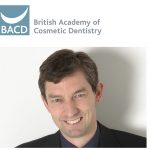The modern world is inundated with ‘fakes’ and ‘copycats’ – fake Gucci handbags, fake Jimmy Choos, copycat drinks brands and even copycat car designs. A quick search on the internet finds several clearly counterfeit products, brands and company names that people have come across, including ‘Pizza Huh’ restaurants, ‘Okay’ shampoo, ‘King Burger’, ‘Dolce&Bannana’, ‘Wee’ games console, ‘Coolgatte’ toothpaste and ‘Chanel’ perfume. While the original brands are protected by copyright, the copycats use similar colours and designs so that they can be easily mistaken for the real thing.
While some of the fake brands might provide amusement, they can be very dangerous. Various counterfeit make-up products have been identified by bloggers and beauty specialists this year, after they caused some nasty skin reactions on unsuspecting buyers. People have purchased what they believed to be a cheaper version of a designer item, only to find that the product they got was unsafe and ineffective.
Also this year, tens of thousands of fake car parts, including counterfeit Audi and Volkswagen radiator grills, were seized in a police raid. The products were criticised for posing potential safety risks for anyone driving a car with said parts incorporated, reducing the longevity and efficiency of the vehicles and also undermining the legitimacy of the motor industry.
Just two of many examples that could be used to demonstrate the issues surrounding fake products, these highlight the importance of using genuine items in a wide range of sectors. This ensures that the products meet all the relevant regulations and are up-to-standard regarding safety, effectiveness and efficiency. A lower price tag usually means that a product has been made in a cheaper way, either by cutting corners in the manufacturing process or by utilising lower quality materials, so it’s important that cost is not the only driving force behind product selection. And this is just as true in dentistry.
Dental authenticity
The authenticity of dental instruments and products has come under fire in recent years, as various counterfeit items have been identified circulating the dental profession. Following the seizure of 100 fake dental instruments and even an X-ray unit by the Medicines and Healthcare products Regulatory Agency (MHRA) in 2012, there has been a real push in dentistry to squeeze out any items that don’t meet basic requirements.
The BDIA’s Counterfeit and Substandard Instruments and Devices Initiative (CSIDI) is one campaign that has highlighted the dangers of non-compliant products. It offers a guide to spotting fakes, emphasising the extra measures that need to be taken when ordering products, particularly online.
The main tips are:
• Use a dealer or distributer you recognise and trust to provide genuine, quality products
• Ensure products have the appropriate CE marks, safety certificates, technical and usage information, serial numbers and holographic labels
• Note the cost – if the price seems too good to be true, then it probably is
• Check the weight of the item – knock-offs will usually consist of lower quality, thinner materials that will weigh less
• Consider the finish on the product and packaging, as faded text, brand names and barcodes could indicate a copycat
Regardless of your role in the practice, your level of experience in dentistry or the type of products you use, ensuring that you have the real deal is essential. Fake items will put your patients’ safety at risk and could lead to complaints and legal challenges for you and your team. The risk is simply not worth it, so make sure you can trust the items you purchase to do what they say they’re going to do.
For more information about the BSDHT, please visit www.bsdht.uk,
call 01788 575050 or email enquiries@bsdht.org.uk















